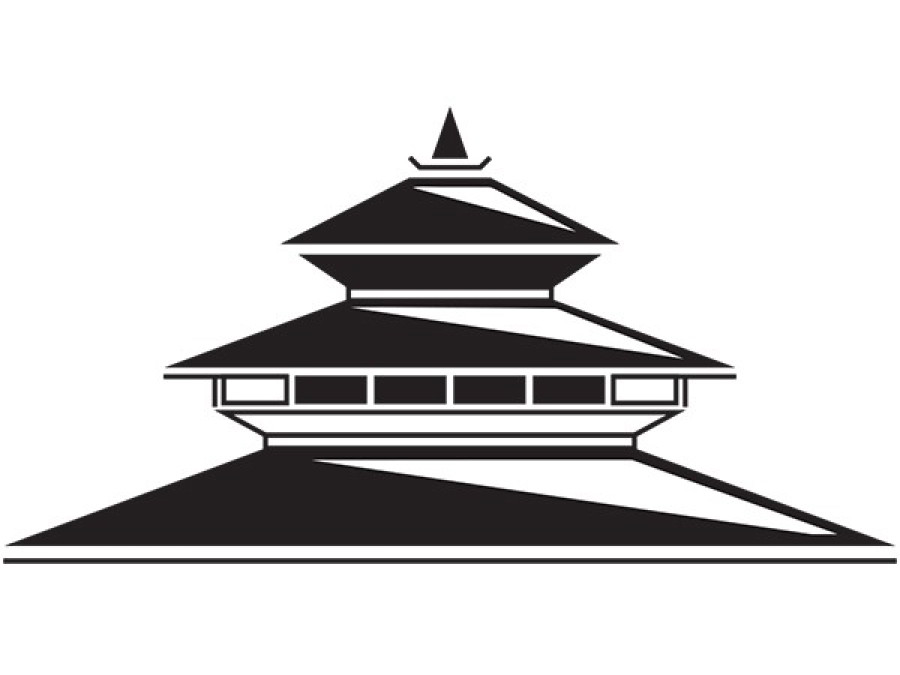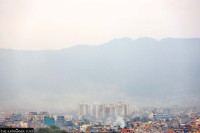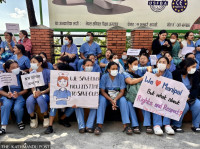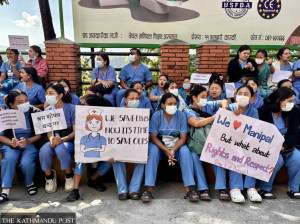Editorial
Bulldozing Batuk Bhairav
Public contractors should observe architectural norms stipulated by the government
This week was marred by yet another flashpoint for heritage conservation. As part of an expansion drive for the Lagankhel-Satdobato road, the boundary wall of the revered Batuk Bhairav Temple in Lagankhel was bulldozed over, despite protests from locals and heritage activists. When agitating locals refused to allow the expansion work to be carried out, heavily armed security personnel were deployed in the area to manage the increasingly irate protests. Both the Department of Archaeology—the apex government body that oversees heritage sites—and the Mayor of Lalitpur claimed to have not known about the expansion project before the bulldozers arrived at Batuk Bhairav.
The Ancient Monument Preservation Act (2013) stipulates that buildings over a hundred years old be preserved in their original form, whether they are personal residences or public spaces like temples. Yet, government bodies—or construction companies contracted to the government—have been showing blatant disregard for the Act, particularly after the April 2015 earthquakes destroyed 753 heritage sites in the country. In the three years since, the government’s efforts to rebuild heritage sites have been obstructed by protests from local communities who accuse the authorities of lack of transparency, a disregard for traditional building methods and of ramming through projects through the lowest-bidder system which hands out lucrative projects to contractors without taking stock of their expertise or previous experience. Projects, including those at the historic Rani Pokhari, Dus Avatar Temple and Jaisi Dega, have ground to a halt in light of vocal local opposition. It also emerged that one contractor used beer bottles instead of bricks while fencing off the iconic Maju Dega Temple at Basantapur. In April, when protests over a proposed expressway mowing over heritage sites in Khokana spilled over into the streets, the government’s heavy-handedness at the peaceful rally drew flak from all quarters.
Now the protests at Batuk Bhairav suggest that the government is yet to internalise lessons from its past missteps. In the last year, protests have moved from one heritage site to another but the agitating locals have largely had the same demand: that contractors observe architectural norms stipulated by the government and reflective of traditional building methods; and that local communities have a larger say and involvement in the process. Yet as flashpoints and protests continue, it seems that at best the different arms of the government are failing to communicate and coordinate with each other and provide oversight; at worst that they are apathetic to the concerns of the citizenry.
In his budget speech for the new fiscal year, the Finance Minister reiterated the government’s commitment to the rebuilding of heritage sites destroyed by the earthquakes, setting a three-year deadline for sites like the Rani Pokhari, Kasthamandap and Dharahara. But these commitments ring hollow in the face of the government’s actions on the ground. There is time yet to bring local voices onboard in order to insure that the rebuilding and development process is inclusive and democratic. If not, these heritage flashpoints look likely to sow seeds of resentment and discord for years to come.




 17.12°C Kathmandu
17.12°C Kathmandu














